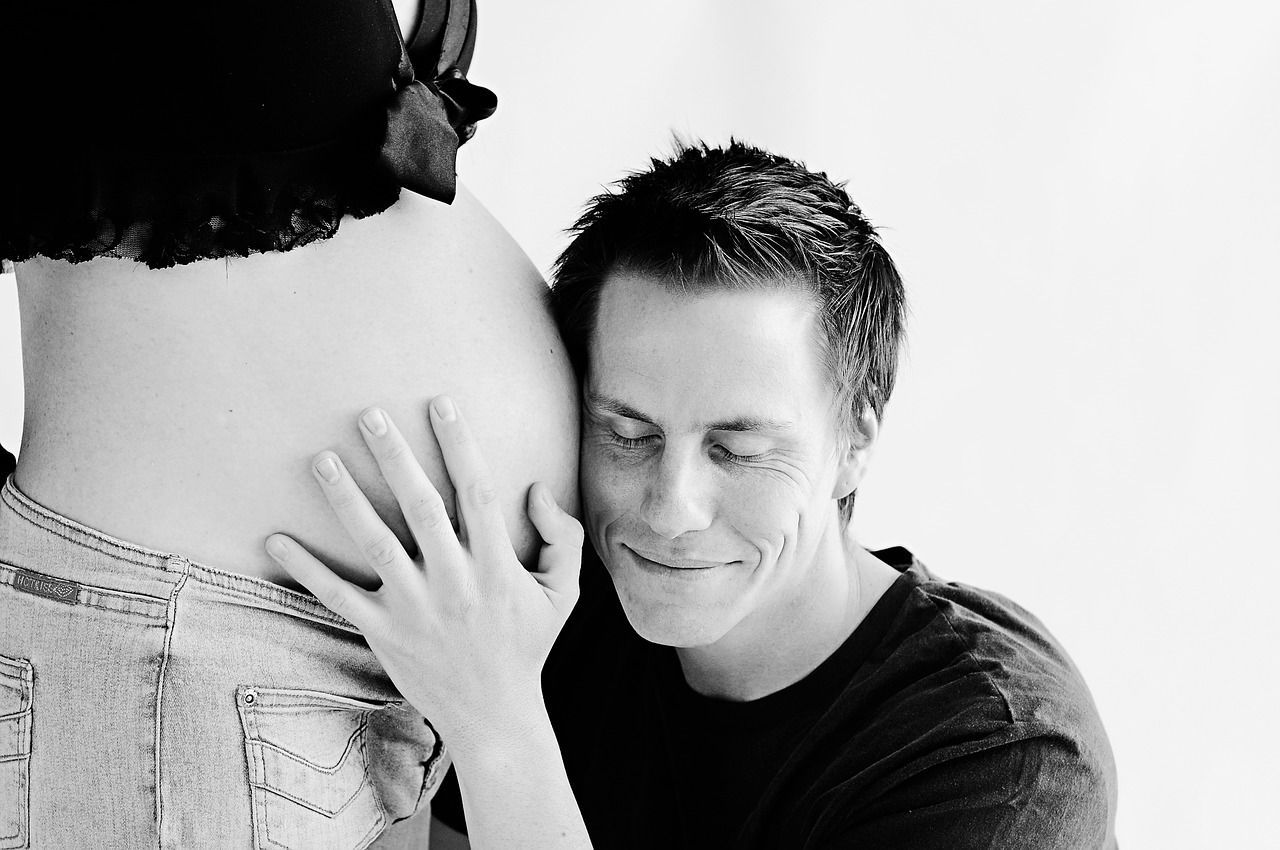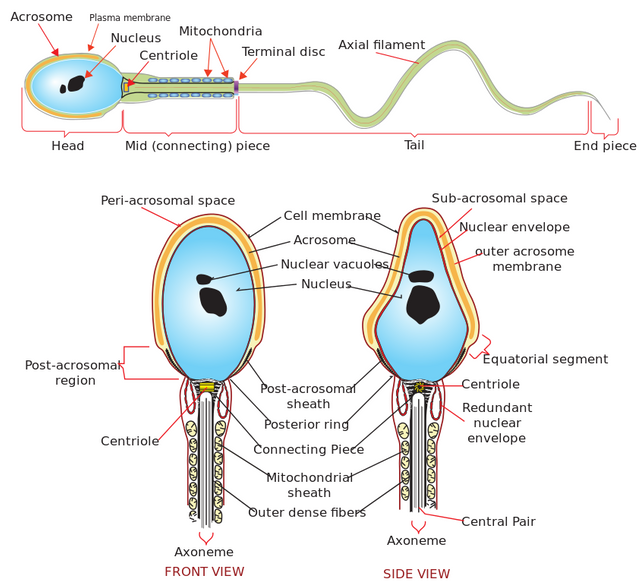Human Reproduction: Spermatogenesis

Human reproduction is necessary for the survival of our species. It involves a male and a female having a sexual intercourse . The ability to reproduce is acquired at the age of puberty (from 11 to 12 years for girls and 12 to 13 years for boys) thanks to the maturation of the genitals that start to produce sexual cells (gametes). This maturation of the organs is accompanied by corporal transformations and the appearance of secondary sex characteristics.
Before I begin, I must remind you that meiosis is a cell division into a specialized type,the germinal cell that reduces the chromosome number by half, creating four haploid cells The picture below explains everything
It is also necessary to know that a hormone is any chemical substance produced by specific glands that is transported by the circulatory system that target specific organs modifying their functioning.
The testis is a dual function gonad,it assures:
-The production of spermatozoa in the seminiferous tubules through a process called spermatogenesis.
-The Secretion of the male hormone testosterone by Leydig cells.
As I said the organs of the male reproductive system enter into activity at the age of puberty, it refers to the transition from childhood to adolescence (fertility). During puberty, the body undergoes anatomical, physiological and psychic transformations: these transformations include spermatogenesis and the development secondary sex characteristics ..
Secondary sex characteristics
Secondary sex characteristics include: muscle and testicle development, involuntary ejaculations during sleep (Nocturnal emission), growth of pubic hair, deeper voice, hair grows in the armpits, the face and the chest, finally the 'awakening' of sexual needs.
Spermatogenesis
Spermatogenesis is the process of sperm production, which takes place in the seminiferous tubules of the testes.
A spermatozoon is a mobile male reproductive (or gamete) cell that is involved in sexual reproduction. It consists of three parts:
-Head containing a haploid nucleus (n = 23 chromosomes) capped with an acrosome.
-The intermediate piece containing the base of the flagellum and many mitochondria (to synthesize the energy necessary for fertilization)
-The tail which consists of a slender thread-like structure which enables the spermatozoon to swim. (flagellum)
Spermatogenesis has 4 phases:
-Multiplication phase: the division of spermatogonia by mitosis to ensure the conservation of the spermatogonia stock (2n chromosome stem cells).
-Growth phase: the spermatogonia become spermatocytes I (2n = 46).
-Maturation phase: the division of spermatocytes I by meiosis to form spermatocytes II (n = 23) then spermatids (n = 23).
-Differentiation phase (also known as spermatogenesis): spermatids become spermatozoa.
The regulation of testicular function
The hypothalamus
The hypothalamus is a part of the brain made up of several nuclei that makes the connection between the nervous system and the endocrine system. The hypothalamus secretes a neurohormone called GnRH (Gonadotropin-releasing hormone). The hypothalamus controls the activity of the pituitary through GnRH.
The pituitary gland
The pituitary gland is a small structure located at the base of the brain below the hypothalamus, to which it is attached via nerve fibers. It secretes two hormones acting on the testes (gonadotropins):
-LH ( Luteinizing hormone ) is a pituitary hormone that acts on interstitial cells (Leydig cell) to stimulate testosterone secretion
-FSH (Follicle-Stimulating Hormone) is a pituitary hormone that indirectly activates spermatogenesis - FSH stimulates the synthesis of a protein called ABP (Androgen Binding Protein) which is essential for the reception of testosterone by germ cells, which activates spermatogenesis.
Testosterone permanently exerts a moderating effect on the hypothalamo hypophyseal axis, this mechanism (negative feedback / negative feedback), ensures the stability of secretions of testosterone.

References :
https://www.ncbi.nlm.nih.gov/books/NBK10095/
http://www.embryology.ch/anglais/cgametogen/spermato03.html
http://www.uwyo.edu/wjm/repro/spermat.htm
Picture Credit:
1- pixabay.com
All the rest- wikimedia.org
One more thing, Join the #steemSTEM channel, A community project to promote science technology engineering and mathematics postings on Steemit.
Congratulations @khalil9! You received a personal award!
Click here to view your Board
Congratulations @khalil9! You received a personal award!
You can view your badges on your Steem Board and compare to others on the Steem Ranking
Vote for @Steemitboard as a witness to get one more award and increased upvotes!